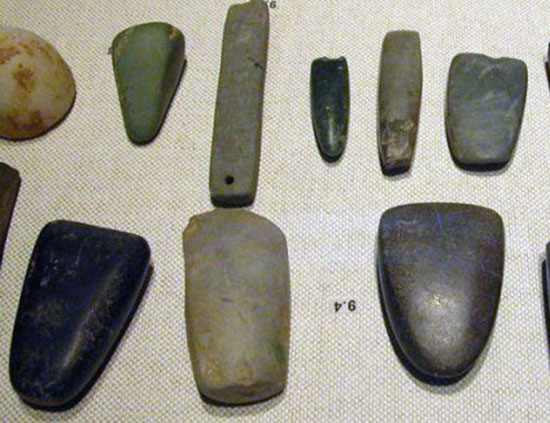Growing up in Queensland, my early encounters with leafy greens were shaped by a vegetable I knew as “spinach”—though, as I later learned, those quotation marks were well deserved. It wasn’t true spinach (Spinacia oleracea) but silver beet (Beta vulgaris subsp. vulgaris), a rugged, heat-tolerant plant that thrived in the subtropical sun. Its enormous, crinkly leaves were as tough as old carpet, their thick veins and fibrous texture demanding a good, long boil to render them edible. My mother, bless her, approached cooking these greens with a practical, if somewhat heavy-handed, method. She’d toss them into a massive pot of water, set it on the stove, and let it bubble away—sometimes for 40 minutes or more, especially if the phone rang and distracted her mid-task. On rushed days, dinner might feature a haphazard mound of dark green, semi-cooked leaves plopped onto the plate, glistening with a sheen of over-boiled moisture. At least our jaws got a workout chewing through them.
Years later, I rediscovered silver beet in a neighbor’s kitchen—Mr. Doo, a culinary wizard who lived next door. He transformed those same tough leaves and chalky stems into something miraculous: stir-fried silver beet, chopped fine and kissed with savory sauces, ready in mere minutes. The contrast was staggering. Where my mother’s efforts resembled something the dog might regretfully deposit on the rug, Mr. Doo’s dish was a revelation—vibrant, flavorful, and tender. How could the same plant yield such wildly different results? That moment sparked a lifelong love affair with silver beet, a green I now cherish for its resilience and versatility.
These days, silver beet is a staple in my garden and kitchen. It grows when other vegetables falter, shrugging off both scorching heat and chilly mornings. In dry spells, when the leaves turn leathery, I strip away the veins and stems, keeping only the tender green bits. Puréed into soups, finely chopped for stir-fries, scattered atop pizzas, or folded into spinach-and-ricotta cannelloni, silver beet proves itself endlessly adaptable. It’s the backbone of countless recipes across cultures—think Swiss chard tarts in Europe or sautéed greens in Mediterranean cuisine. I became so enamored with it that English spinach barely got a look-in. Why bother? Silver beet seemed to do everything spinach could, but with less fuss and greater abundance.
Then the rains came. For the past two years—up to this moment in March 2025—consistent downpours have transformed my garden. English spinach, once an afterthought, has erupted into lush, tender leaves, sweet and succulent in a way I’d never appreciated before. Suddenly, all those silver beet recipes I’d perfected found a new muse. Spinach triangles, spinach frittatas, creamy spinach soups—they’re fabulous with true spinach, their delicate texture elevating every bite.
“Pass me another spinach triangle, darling,”I find myself saying, marveling at how a shift in weather could rewrite my culinary loyalties.
This journey through greens—silver beet, spinach, and a host of others—has taught me not just how to cook them but how to grow them, love them, and understand their place in the world. What follows is an exploration of these leafy wonders: their cultivation, their flavors, their quirks, and the myriad ways they’ve sustained people across climates and centuries.
Silver Beet: The Unsung Hero of the Garden
Silver beet, often called Swiss chard in other parts of the world, is a member of the beet family (Beta vulgaris), closely related to sugar beets and red beets but bred for its leaves rather than its roots. Unlike true spinach, which belongs to the Amaranthaceae family, silver beet is a chenopod, a group that includes quinoa and lamb’s quarters. Its origins trace back to the Mediterranean, where wild beets (Beta vulgaris subsp. maritima) grew along coastlines, their leaves harvested by early civilizations. By the time it reached Australia, silver beet had earned a reputation as a tough, reliable green, perfectly suited to the country’s variable climate.
In Queensland, where I grew up, silver beet was a backyard staple. Its broad, glossy leaves—sometimes spanning a foot or more—caught the sun like solar panels, while its thick, celery-like stems came in shades of white, yellow, pink, or red, depending on the variety. The “Fordhook Giant,” a popular cultivar, was likely what my mother grew, its massive leaves explaining why boiling felt like the only way to tame them. Nutritionally, silver beet is a powerhouse, packed with vitamins A, C, and K, plus magnesium, potassium, and iron. Its oxalic acid content, however, can make it slightly bitter if not cooked properly—hence my mother’s marathon boiling sessions.
What I didn’t appreciate as a kid was silver beet’s adaptability. It thrives in temperatures from 10°C to 30°C (50°F to 86°F), tolerating light frosts and scorching summers alike. Drought? It soldiers on, though the leaves toughen. Floods? It handles wet feet better than most greens. This resilience makes it a gardener’s dream, especially in climates like Australia’s, where weather can swing from arid to sodden in a heartbeat.
Cooking Silver Beet
Cooking silver beet well, as Mr. Doo taught me, is all about technique. The stems take longer to soften than the leaves, so I chop them separately—dicing the stems for a quick sauté, then tossing in the shredded leaves just long enough to wilt them. A splash of soy sauce, a drizzle of sesame oil, or a knob of garlic butter transforms it into a dish that belies its humble roots. Alternatively, I’ll blanch the leaves briefly to mellow their oxalic bite, then use them in lasagnas, quiches, or even as a wrap for spiced fillings. The stems, often overlooked, pickle beautifully or add crunch to salads when sliced thin.
Growing Silver Beet
In the garden, silver beet is low-maintenance. Sow seeds directly into well-drained soil enriched with compost, spacing them about 30 centimeters (12 inches) apart. Water consistently—about an inch per week—and mulch to keep the soil moist. Within 50 to 60 days, you’ll have harvestable leaves. Cut outer leaves first, leaving the inner ones to grow, and you can keep picking for months. In warm climates, it’s a biennial, meaning it might bolt to seed in its second year, but regular harvesting delays that process. If it does flower, don’t despair—the young seed heads are edible, too.
English Spinach: The Tender Triumph
True spinach (Spinacia oleracea) entered my life late, overshadowed by silver beet’s dominance. Native to ancient Persia, spinach spread across Asia and Europe, earning fame as a nutrient-dense green long before Popeye cemented its reputation in the 1930s. Unlike silver beet, it’s an annual, completing its life cycle in a single season, and it prefers cooler, wetter conditions—ideal for the rainy spell we’ve had since 2023.
When I finally gave spinach a chance, the difference was striking. Its leaves are softer, less fibrous, with a sweet, almost buttery flavor that silver beet can’t match. Varieties like “Bloomsdale,” with its crinkled, savoyed leaves, or “Baby Spoon,” bred for tender salad greens, have turned my garden into a spinach paradise. Nutritionally, it’s similar to silver beet—rich in vitamins, minerals, and antioxidants—but lower in oxalic acid, making it gentler on the palate raw.
Growing Spinach
Growing spinach, however, is a lesson in patience and water. It demands consistently moist soil; let it dry out, and the leaves turn bitter or the plant bolts to seed. I’ve learned to water deeply—about 1.5 inches weekly, more in heat—and mulch heavily with straw or compost to lock in moisture. Plant in early spring or late summer in temperate zones, avoiding the peak heat that triggers flowering. In Queensland’s subtropics, I sow it during the cooler, wetter months—March to August—when temperatures hover between 15°C and 25°C (59°F to 77°F). Frost isn’t a dealbreaker; spinach can handle a light chill, though prolonged freezes below -5°C (23°F) will damage it.
Fertilizer matters, too. Spinach loves nitrogen-rich soil—think aged manure or a balanced 10-10-10 blend—but don’t apply it to dry ground. Water it in well to avoid burning the roots. Compost, as with silver beet, yields the best flavor and texture, giving you leaves so tender they melt in your mouth. Harvest when leaves reach 10 to 15 centimeters (4 to 6 inches), snipping outer ones to encourage regrowth. For baby spinach, sow seeds densely, thin as needed, and pick when leaves are finger-sized—perfect for salads or a quick sauté.
Cooking Spinach
Spinach’s culinary range is vast. Raw, it’s a salad star, pairing with nuts, berries, or a sharp vinaigrette. Cooked, it shines in classics like creamed spinach, spanakopita, or palak paneer. My recent obsession? Spinach frittatas—eggs, cheese, and those sweet green leaves baked into golden perfection. Two years of rain have made me a convert; silver beet may be tough, but spinach is sublime.
Beyond the Basics: A World of Greens
Silver beet and spinach are just the beginning. Australia’s climate—spanning tropical north to temperate south—supports a dizzying array of leafy greens, each with its own character. Here’s a deep dive into some standouts from the original piece, plus a few extras, complete with growing tips and kitchen tricks.
Warrigal Spinach (Tetragonia tetragonoides)
Native to Australia and New Zealand, Warrigal spinach—also called New Zealand spinach or Botany Bay greens—is a sprawling, drought-tolerant perennial that laughs at heat. Its triangular, succulent leaves spread like a groundcover, sometimes stretching a meter across in wet years. Historically, it sustained Indigenous Australians and early settlers, who valued its ability to grow wild in coastal sands and inland plains.
In my garden, I don’t bother planting it—it self-seeds wherever conditions suit, popping up along fences or in neglected corners. The trick is picking young leaves; older ones get tough and bitter. High in oxalic acid—more so than silver beet—it requires blanching: 30 seconds in boiling water, then a cold rinse to leach out the compound. Post-blanch, it’s stir-fry-ready, holding its shape better than spinach. Nutritionally, it’s a vitamin C and A champ, with a slightly salty tang that nods to its coastal roots.
Grow it in full sun with well-drained soil. It tolerates poor fertility but thrives with compost. Water sparingly—it’s drought-hardy—but expect explosive growth in rain. Beware: it can become invasive, so harvest aggressively or confine it to pots.
Abelmoschus manihot (Aibika)
Known as aibika, bele, or edible hibiscus, this tropical green hails from Southeast Asia and the Pacific. Its broad, palmate leaves come in green or red-stemmed varieties, offering a mild, slightly mucilaginous texture when cooked. In subtropical Queensland, it’s a perennial, growing 1 to 2 meters tall with minimal fuss. In temperate zones, treat it as an annual—ours thrived one summer but vanished with the first frost.
Plant in rich, moist soil under full sun. Feed with compost or a high-nitrogen fertilizer, and water generously. Harvest young leaves for steaming, soups, or stir-fries; older ones thicken stews like okra, its cousin. It’s rich in vitamins A and C, plus protein—rare for a green.
Okinawa Spinach (Gynura crepioides)
A fast-growing perennial from East Asia, Okinawa spinach dazzles with purple undersides and green tops. It’s a tropical darling, needing warmth, water, and fertile soil to explode into a bushy mound. In frost-free zones, it’s a year-round producer; elsewhere, grow it indoors or as an annual. Cuttings root easily, making it a sharer’s delight.
The flavor is mild and nutty, perfect raw in salads or lightly cooked. It’s a folate and antioxidant standout. Plant in sun or partial shade, keep the soil damp, and feed monthly. Harvest outer leaves to keep it bushy.
Brazilian Spinach (Alternanthera sissoo)
Nicknamed “poor man’s spinach,” this low-growing tropical green forms dense, bright green mounds in wet, warm climates. It’s a perennial in frost-free areas but flops in cooler zones—don’t bother below 15°C (59°F). Its small, crisp leaves are best steamed or sautéed, offering a subtle flavor and decent vitamin A.
Grow in full sun with moist, fertile soil. It spreads via runners, so pots or raised beds contain it. Water daily in heat; it wilts fast otherwise. Harvest young shoots for tenderness.
Ceylon Spinach (Basella alba)
A climbing vine from South Asia, Ceylon spinach—also called Malabar spinach—sports thick, heart-shaped leaves in green or red-stemmed forms. It’s perennial in tropics and subtropics, tolerating light cold better than Brazilian spinach. Train it up a trellis or fence; it’ll reach 2 meters with gusto. The mucilaginous texture suits soups or curries, and it’s loaded with vitamins A and C.
Plant in rich, moist soil with full sun. Water and feed generously—it’s a glutton for both. Harvest leaves and young stems; older ones get slimy.
Egyptian Spinach (Corchorus olitorius)
Known as jute or molokhia, this fast-growing annual thrives in warm climates, reaching a meter tall with yellow flowers. Native to Africa, it’s a Middle Eastern staple, its leaves stewed into a viscous soup. Young leaves work raw in salads, but older ones can turn bitter—blanching helps. It’s a fiber and vitamin C source.
Sow in spring or summer in well-drained, fertile soil. Water regularly; it bolts in drought. Harvest early for tenderness. In temperate areas, it’s a summer-only fling.
Growing Greens: Tips and Tricks
Across these greens, patterns emerge. Water is king—spinach and its kin crave moisture, though Warrigal and silver beet forgive dry spells. Soil fertility boosts flavor and yield; compost is your best friend, with manure or organic fertilizers as backups. Sunlight varies—tropicals like Okinawa and Ceylon demand full rays, while spinach tolerates partial shade. Harvesting keeps plants productive: cut outer leaves, leave the core, and they’ll regrow.
Pots work wonders, especially for small spaces. Silver beet and spinach thrive in containers with good drainage, while colored varieties—red-stemmed chard or purple Okinawa—add flair to patios or windowsills. For longevity, cut back bolting plants; silver beet and spinach might rebound for another season, though it’s a gamble.
The Kitchen: From Garden to Plate
Greens are culinary chameleons. Silver beet’s robustness suits hearty dishes—think gratins or stuffed rolls—while spinach’s delicacy shines in lighter fare. Warrigal’s post-blanch versatility spans stir-fries to soups, and aibika’s slipperiness thickens broths. Experimentation is key: pizza with Ceylon spinach, frittatas with Egyptian leaves, or salads with baby Okinawa.
Nutritionally, they’re goldmines—vitamins, minerals, and antioxidants abound. Cooking reduces oxalic acid where needed, unlocking flavors and nutrients. My table now groans with options: spinach triangles, silver beet stir-fries, Warrigal wraps. Each green tells a story—of resilience, adaptation, and taste.
Conclusion: A Greener Life
From my mother’s boiled silver beet to Mr. Doo’s stir-fry epiphany, greens have shaped my palate and garden. Two years of rain brought spinach to the fore, but silver beet remains a stalwart. Warrigal, aibika, and the rest expand the palette, proving that wherever you are, there’s a green to grow and savor. So plant a seed, water it well, and pass me another spinach triangle—darling, the journey’s just begun.





























0 Comments